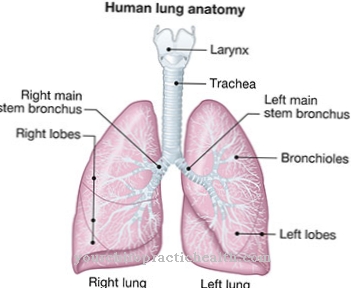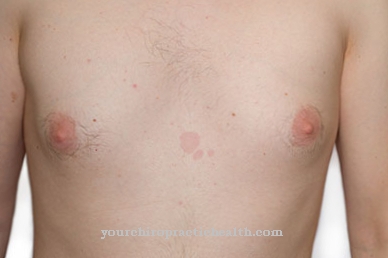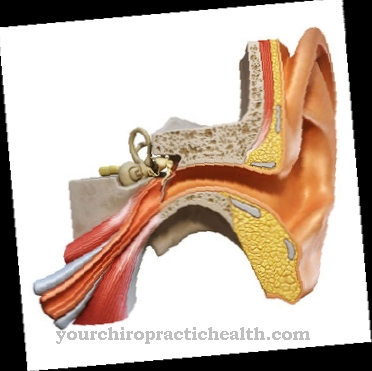Vitiligo or White spot disease called is a skin disease in which the skin turns white in different parts of the body. This complete loss of color is caused in Vitiligo by the malfunction of the cells responsible for pigment formation.
What is Vitiligo?
.jpg)
Vitiligo refers to a skin disease that is particularly noticeable in dark-skinned patients. The natural pigmentation occurs through the pigment formation in specially suitable cells. The pigment melanin is no longer formed in sufficient quantities in these melanocytes in Vitiligo.
White spots appear on the skin that have no pigmentation. Vitiligo is a chronic, non-contagious disease with an as yet unexplained cause. There is an increased risk for those with autoimmune diseases and family history of white spot disease.
Among the skin diseases, Vitiligo is considered to be harmless and does not necessarily need to be treated. In the absence of the main protective pigmentation, the risk of sunburn and skin cancer due to Vitiligo increases with increased exposure to the sun.
causes
Vitiligo arises when the skin cells responsible for pigment formation can no longer produce enough pigment. The hydrogen peroxide content is increased in these melanocytes, which is why melanin cannot be produced.
However, it is not known why this ascertainable increase in the hydrogen peroxide content occurs. The trigger for Vitiligo is therefore unclear. It is believed that, similar to rheumatism, it is an autoimmune disease. Then the body reacts to its own cells due to a misjudgment of the immune system with defense reactions and triggers the destructive process.
Another theory suspects a congenital genetic defect in Vitiligo, but the associated genes have not yet been identified. Isolated events such as sunburn as a particular trigger or psychological stress are also discussed as causes for Vitiligo.
Symptoms, ailments & signs
The symptoms of vitiligo or white spot disease are to be found in a pigment disorder on the skin. The otherwise pigmented skin turns white in places. The main symptom also gave the disease its name. The white pigmented patches of skin are mostly astonishingly symmetrical and clearly defined. In some cases they are asymmetrical. In this case, they can also appear washed out or blend into one another.
All parts of the body are potentially affected by the main symptom in white spot disease. The darker the skin of the person affected, the clearer a Vitiligo is. In addition, this pigmentation disorder can also discolor the hair on the affected body regions. Occasionally there is depigmentation of the lips or the lining of the mouth. Even with such symptoms, vitiligo is more noticeable in people with dark skin than in light skin types.
Inner ears or eye areas are more rarely affected by white spot disease than other areas of the body. In some of the sick people, newly emerging spots are announced by severe itching. In most people with vitiligo, however, the disease has no further symptoms. Vitiligo (white spot disease) usually only produces the optically visible key symptom.
However, this can put a heavy strain on the psyche of those affected. This can lead to symptoms such as inferiority complexes or depression. After all, there is a risk of suicide for some of those affected.
Diagnosis & course
Special feature for Vitiligo are white spots on the areas of the skin that are particularly exposed to the sun. During the diagnosis, the dermatologist carries out an extensive skin examination. For this, it is important to question the patient, which can reveal a familial tendency to vitiligo.
Surveying patients with Vitiligo includes determining whether an event such as severe sunburn occurred before the first appearance of the white spot disease. If the diagnosis cannot be confirmed by the doctor with this anamnesis, a biopsy and blood tests will be carried out.
Vitiligo can spread in such a way that a previously dark-skinned person apparently undergoes a change in skin color for outsiders due to the merging white spots. In some cases, the white spots in Vitiligo remain unchanged for years. It is also possible that after some time the production of melanin in the melanocytes starts again and Vitiligo disappears through self-healing.
Complications
Vitilgo is harmless and, from a purely medical point of view, doesn't even need treatment. However, complications often arise in the form of severe emotional stress. Many, especially young, patients feel disfigured by the disease.
This is especially true if this is very pronounced on the face and attempts at therapy do not lead to a visible improvement.Those affected then very often lose their self-confidence in dealing with others and begin to isolate themselves. This can lead to serious mental disorders, especially depression that requires therapy.
Physical complications usually result exclusively from the fact that the depigmented areas of the skin are extremely sensitive to UV light and must therefore never be exposed to the sun or the solarium without protection. This can quickly lead to painful and itchy burns. For those affected, especially at the beginning of the illness, it is stressful not to be able to venture out of the house without sun protection.
This is often simply forgotten at first. Since the consequences are not noticeable immediately, but usually only several hours later, those affected often suffer from pain and itching. If the skin, which is already severely irritated, is additionally irritated in this situation by constant scratching, it can lead to inflammation, which leaves scars after it has healed. In addition, the risk of developing skin cancer increases.
When should you go to the doctor?
If changes in the appearance of the skin are found in the development process or growth of the child, a doctor should be consulted to clarify the cause and make a diagnosis. Changes in the skin are often a sign that there is a disease that requires action. In particular, pigmentation associated with white spots on the skin should be discussed with a doctor. Consultation with a doctor is recommended in the event of itching, swelling or open wounds. Optical changes in the lips or the mucous membrane in the mouth are further signs of a health problem. A doctor's visit is necessary if you overreact to sunlight, pain, or constant scratching.
For the best possible treatment success, therapy is advisable as soon as the irregularities appear. If, in addition to the physical abnormalities, there are also scenes of emotional stress, the person affected also needs help and support. A withdrawal from social and societal life, reduced self-confidence and general malaise should be presented to a doctor. A therapist should be consulted if there are abnormal behavior, statements about a premature self-chosen death or a depressive appearance. A visit to the doctor is necessary in the event of inner restlessness, a reduced level of mental performance and the loss of vitality.
Treatment & Therapy
Treatment of Vitiligo consists in stimulating the affected cells to produce new melanin, preventing damage due to insufficient protection from sunlight and alleviating the psychological consequences of white spot disease.
Vitiligo is not a disease that is associated with pain or long-term functional impairment. The consequences for a patient are nevertheless considerable, since the white spot disease mostly affects visible areas of the body. This involuntary display of the skin disease becomes part of the treatment as a psychological burden that can exacerbate Vitiligo.
The difference between the unpigmented and normally pigmented areas of the skin is evened out using cosmetic aids. UV radiation can stimulate melanin production, but is only advisable for a limited time.
Smaller stains in Vitiligo can be treated with an autologous skin transplant. A tattoo is recommended as an alternative if the area of skin affected by Vitiligo is not too large. The treatment depends on the individual severity of Vitiligo and the level of suffering that patients experience due to the white spot disease.
You can find your medication here
➔ Medicines for pale skinprevention
A prevention for Vitiligo can not. Eating a healthy diet and avoiding excessive sun exposure is recommended to rule out risk factors for vitiligo. Since stress can be a trigger, regular rest periods help in hereditary predisposition to reduce the risk of developing vitiligo.
Aftercare
Since Vitiligo cannot be cured with the current state of medicine, there are no aftercare methods in this regard. The only option medical professionals have for vitiligo is to slow down and / or stop the process. To do this, the patient's lifestyle must be optimized. Stress needs to be reduced as it is a trigger for white spots to spread. The affected areas should be protected from direct sunlight and, if necessary, treated with special medicinal creams.
Patients should therefore strive for a relaxed lifestyle, people with a demanding job or private life should take measures to reduce stress. This can be done by learning certain relaxation techniques such as progressive muscle relaxation, meditation, yoga, autogenic training or breathing techniques. Sun protection products with a high sun protection factor (at least 50+) should be used regularly. Those affected should eat healthily.
An anti-inflammatory diet rich in vitamins, minerals and antioxidants supports the immune system. Adequate hydration and enough sleep contribute to well-being. If the doctor has prescribed medication, it should be taken or applied as directed. Regular check-ups at the dermatologist should always be kept. The doctor decides at which intervals these take place.
You can do that yourself
Those affected should take special care of their skin, because the disease makes the skin much more sensitive than normal skin. Patients should always use a sunscreen with a very high sun protection factor. This should be applied to the affected skin half an hour before exposure to the sun. Wearing hats and sunglasses as well as appropriate clothing that covers the skin can also protect against sunburn.
Those affected should especially avoid the sun in the midday heat. Because the patients burn faster. Sunburn would only damage sensitive skin further. Tattoos should also be avoided. There is a special tattoo technique, the so-called micropigmentation, with the help of which it is possible to hide the white spots. However, it is possible that a tattoo can lead to further progression of the disease and thus to the appearance of new spots.
There are natural substances that are able to care for the skin suffering from vertigo and even possibly delay the progression significantly. A tried and tested home remedy is red clay, which mixed with water can be used as a healing skin pack. The clay pack contains copper, which can support the diseased skin. Red clay also improves blood flow to the skin, making it look much healthier.



.jpg)

.jpg)





















